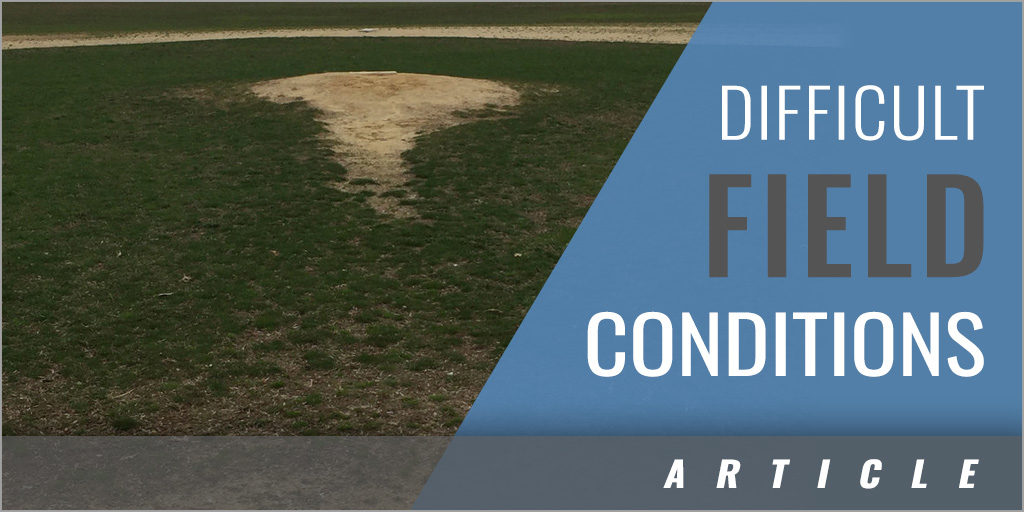|
By: Celeste Knierim Originally Published in: Practice Perfect Softball - NFCA Provided by: Human Kinetics In some areas of the country, teams have to play in difficult conditions. Teams need to practice in these conditions and discuss how to play in them to be adequately prepared and mentally acclimated. The attitude of each team member playing in these conditions is a huge factor in being successful. The playing field may be in sub par condition:
Can your team play on fields that have the following conditions?
Your attitude toward playing under these conditions has to be one of confidence. You need to show this attitude to the players because they will follow your lead. If you complain outwardly about the conditions and act worried or use excuses, the players will notice that and follow your attitude. Of course, you need to make sure that the field is safe to play on, but any negative discussion should be only among coaches. The players need to survey the field before each game and look for potential problem areas such as holes in the outfield, slopes in the field, grass clumps, and the shape of the infield. The infielders need to check their areas and then smooth and manicure them. Whenever they are playing defense, they should look at their areas for any problem spots like rocks, divots, and uneven areas where the ball could take a bad hop. If players find any problem areas, they need to smooth them out. Preventing problems is easier than reacting to a bad hop. Whenever possible, have the team practice in substandard conditions. The players need to assess whether the field is sloped, especially whether it slopes downward toward the outfield fence. For example, the right fielder needs to be able to read the spin of the ball and the slope to be able to cut off the ball. The first baseman needs to learn the best way to play first. Some coaches like the foot on the base early, but some do not. If a first baseman puts her foot on the base right away before seeing the path of the ball and a late break occurs in the throw, she may be unable to recover and catch the ball or block it from going down the first-base line. Straddling the base in fair territory with the heels about 4 inches (10 cm) from the base and having the body square to the throw is a better way to cover the base, especially with a slope. When the first baseman assesses the path of the ball, she can pop her foot on the base. If the throw goes wild, she can then slide her foot to a different position on the base and prevent the ball from going into the outfield. Teams must repeatedly practice catching balls in foul territory. You can place an obstacle in their way such as a coach or equipment so that they learn to go around it. Players should practice the technique for approaching a ball close to the fence. They need to find the fence first to avoid running in to it or letting the ball drop because they do not know how far they are from the fence. You need to realize that hard-packed mud and sliding do not mix well because the runner will stick on that surface. Stealing could be less likely to occur. Very hard infield will produce high hops on grounders. Have your players practice smacking the ball down to produce a high hop. Most runners will be safe if the ball takes that high bounce. |







